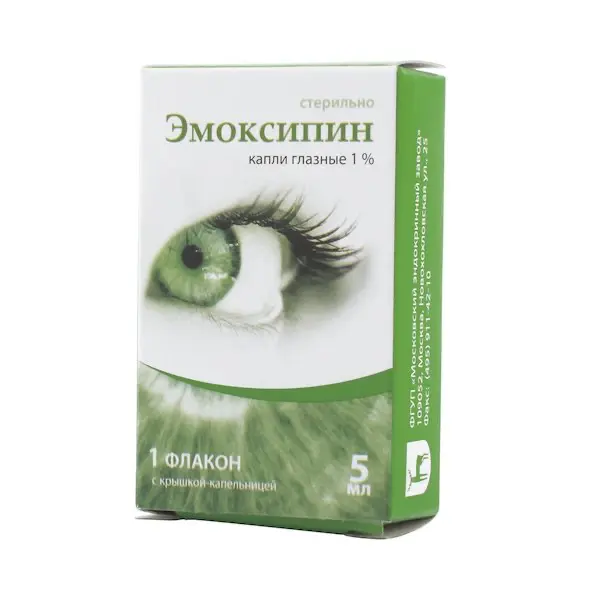Description
Phenylephrine-Optic Pharmacodynamics
Phenylephrine is an α-adrenomimetic with a marked non-selective α-adrenomimetic effect. When used in therapeutic doses it has no significant stimulating effect on the central nervous system.
When used topically in ophthalmology it causes pupil dilation, improves outflow of intraocular fluid and narrows conjunctival vessels.
It weakly affects β-adrenoreceptors, including those in the heart (has no positive chrono- and inotropic effects). The drug has a vasoconstrictor effect similar to that of norepinephrine (noradrenaline). The vasopressor effect of phenylephrine is weaker than that of norepinephrine, but it is more durable. Causes vasoconstriction 30-90 seconds after instillation, duration 2-6 h
After instillation, phenylephrine causes contraction of the pupil dilation muscle, thereby causing pupil dilation. Midriasis occurs within 10-60 minutes after a single instillation. Midriasis persists for 2 hours. Midriasis caused by phenylephrine is not accompanied by cycloplegia.
Indications
Iridocyclitis (for prevention of posterior synechiae and reduction of exudation from the iris)
For diagnostic pupil dilation during ophthalmoscopy and other diagnostic procedures to monitor the condition of the posterior segment of the eye.
To perform a provocation test in patients with a narrow anterior chamber angle profile and suspected closed-angle glaucoma.
Differential diagnosis of superficial and deep eyeball injection. Red eye syndrome (to reduce hyperemia and irritation of the eye membranes).
Spasm of accommodation.
Contraindications
Hypersensitivity to the components of the drug.
Narrow-angle or closed-angle glaucoma.
Old age.
Severe cardiovascular or cerebrovascular diseases.
Arterial hypertension combined with CHD, aortic aneurysm, atrioventricular block of degree I-III, arrhythmia.
Tachycardia.
Tear production disorder.
Prematurity; children under 6 years of age (with accommodation spasm).
Hyperthyroidism.
Liver porphyria.
Congenital deficiency of glucose-6-phosphate dehydrogenase.
Rhinitis.
Directions for use and dosages
- Topically.
- In iridocyclitis the drug is used to prevent development and rupture of already formed posterior synechiae; to reduce exudation in the anterior chamber of the eye. For this purpose, 1 drop of the drug is instilled into the conjunctival sac of the affected eye (eye) 2-3 times a day.
- A single instillation of the drug is used during ophthalmoscopy. As a rule, instillation of 1 drop of the drug into the conjunctival sac is sufficient to create mydriasis. Maximal mydriasis is achieved after 15-30 min and maintained for 1-3 h.
- If it is necessary to maintain mydriasis for a long time, a second instillation after 1 h is possible.
- For diagnostic procedures a single instillation of the drug is used:
– as a provocative test in patients with a narrow anterior chamber angle profile and suspected closed-angle glaucoma. If the difference between the intraocular pressure values before injection and after pupil dilation is between 3 and 5 mmHg, the provocation test is considered positive;
– for differential diagnosis of the type of eyeball injection: if 5 minutes after instillation of the drug a narrowing of the eyeball vessels is noted, the injection is classified as superficial, if redness of the eye persists the patient should be carefully examined for iridocyclitis or scleritis, as this indicates the expansion of the deeper-lying vessels.
- To relieve accommodation spasm in children from 6 years of age and adults, the drug is instilled into each eye 1 drop at night daily for 4 weeks.
- Order of work with a bottle dropper:
1. Turn the cap counter-clockwise and remove it. 2.
Carefully, without touching the tip of the dropper bottle with your thumb and forefinger of one hand.
3. Tilt your head back, place the tip of the dropper bottle over your eye and with the index finger of the other hand pull down the lower eyelid. Gently press the dropper bottle down and drip the desired amount into the conjunctival sac of the eye.
Avoid contact of the tip of the open dropper bottle with the surface of the eye and hands.
4. After use, put the cap on the dropper bottle and close by rotating it clockwise
- After opening the dropper bottle the drug can be used within 30 days. After this period, the dropper bottle should be thrown away.
- If the dropper bottle and tube is visibly damaged, do not use the drug.

![Phenylephrine-optic eye drops 2.5% - [5 ml vial]](https://mediscom.com.co/wp-content/uploads/2025/06/Phenylephrine-Optic-25pct-5ml.webp)
![Travoprost-Optic eye drops 0.004% - [5 ml vial]](https://mediscom.com.co/wp-content/uploads/2025/06/Travoprost-Optic-0004pct-5ml.webp)
![Naphazoline, diphenhydramine (Polynadim) eye drops - [10 ml vial]](https://mediscom.com.co/wp-content/uploads/2025/06/Polynadim-10ml.webp)
![Hypromellose (Artificial tear) eye drops 0.5% - [10 ml vial]](https://mediscom.com.co/wp-content/uploads/2025/06/Tear-Artificial-05pct-10ml-200x200.webp)
